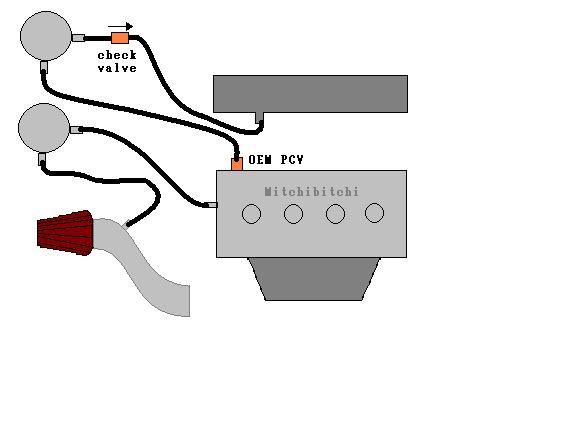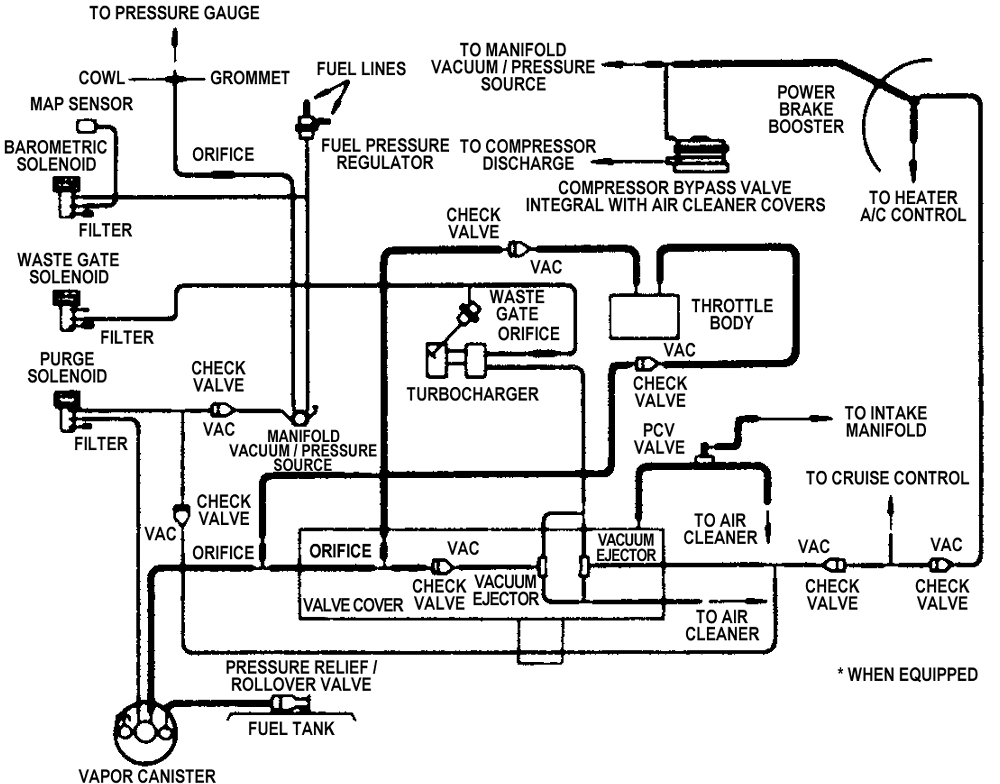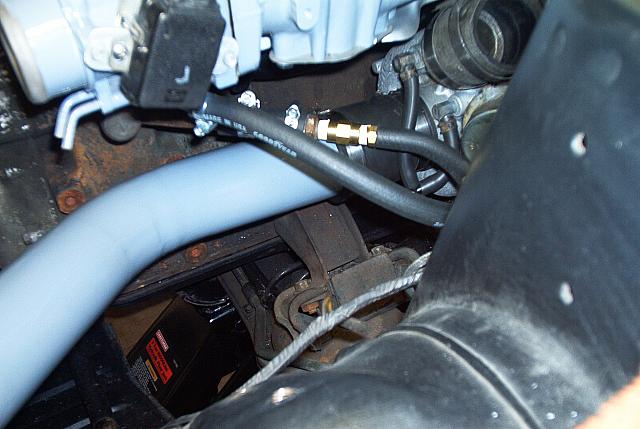Wow, this is a confusing subject. My rear main seal and oil pan seals are both leaking; I'm going to replace them but want to make sure its not because of crankcase pressure. On my Datsun 280zx turbo, I have the valve cover vented through a K&N breather filter. I also have the crankcase vent plumbed through a PCV and into the intake manifold.
I'd like to install a Moroso catch can between the crankcase vent and PCV. But, I don't understand the concepts well enough... will this eliminate excess pressure that might be pushing oil past my seals? Or will it simply pull oil and fuel vapors out of the intake (which is not a bad thing, as it may help with detonation)?
Does PCV valve protect the crank case from manifold pressure? I can see why it should, since it should close when there's no vacuum.
The PCV works on vacuum so under boost it will not work when connected to the manifold.
Boosted cars have a different PCV system.
You need to have two vents. One with a PCV and one just vented. You also need to make sure you use a PCV valve that will seal shut when boost is pushing it shut. If the PCV doesn't seal against boost, then boost will enter the crankcase and if there is no vent then it will have no where to go. You may have to put a check valve between the PCV and the manifold port to help prevent boost from leaking past the PCV.

(Not ripping on the OP...More like a serious request.) Why two vents?

The line going out of the PCV to the intake will see boost when the car is in boost. If there is no other vent for the crankcase you're going to possibly pump boost into the crankcase which is the opposite effect of what you're going for. No PCV will completely seal against boost so you'll see a check valve in the system most of the time.
This is probably the most common dual catch can setup:

Note that it isn't absolutely necessary for the second can to be plumbed into the inlet side of the turbo but it is suggested to ensure there is always a vacuum on the crankcase.
This is the factory Chrysler setup:

There is only one port on the valve cover with a rubber tee that comes off of it. One side runs through a PCV to the intake vacuum port, the other is side is ran into the factory air box so there is a vacuum when the car is under boost.
As for the OP's car I've never heard of a car pushing oil past a main seal because of a bad PCV system. I'm pretty sure you'd see oil smoke out of the exhaust long before it would blow out of the main seals.
minivan_racer wrote:
As for the OP's car I've never heard of a car pushing oil past a main seal because of a bad PCV system. I'm pretty sure you'd see oil smoke out of the exhaust long before it would blow out of the main seals.
Maybe my theory is just an urban legend? My old Z has never been rebuilt, so I assume I have tons of blow-by. If I'm pressurizing the crankcase that's got to go somewhere.

stan_d
SuperDork
2/26/17 7:54 a.m.
My saab puts the crankcase vent right at inlet of the turbo. Always seeing vacume.
Toyota also puts the valve cover vent to the intake between the air cleaner and the turbo.

wae
Dork
2/26/17 9:15 a.m.
I built out my PCV to closely mirror the stock SRT-4 setup. I've got a PCV valve that goes through a catch-can to the intake manifold and then the breather port goes after the air filter and before the turbo through a second catch-can. One of the things I read about PCV valves on boosted engines is that the valve needs to seal completely when under boost so that vacuum will pull from the valve cover but boost will not enter.
Come to think of it.. I wonder if I should have another check valve between the intake manifold and my catch can. I could be leaking boost there.

evildky
SuperDork
2/26/17 9:42 a.m.
The pcv is not what's causing your oil pan and rear main to leak. They are leaking because they are bad or because they were improperly installed, based on my experience I'd say the latter is the more likely issue.
I've run my L28ET wiht no catch car and no pcv for years without issue, just filters as you described. The catch can comes into play when you have excessive blowby and you are actually pushing small amount of oil out your valve cover and or block vent. This is an issue I never experienced with the L28ET. Is it better to run a catch can just in case, yes, but it doesn't need to be plumbed back to the intake unless you have excessive blowby or you just want to.
Good advice. The oil pan has been leaking for a while; the rear main less so. Both were last touched over 6 years ago. If its not the PCV, it may be an imperfect install coupled with lesser quality parts.
I found in the FSM that the valve cover and crank case are vented together, as air passes through the timing chain area and oil drain through the head. That means the crank case vent and valve cover vent are essentially equivalent. Since I have a breather on the valve cover, I do agree its unlikely that a clogged PCV is the cause of my leaks. There should be oil vapor spraying out of the breather vent on the valve cover, if that's the case.
Crank case breather -> hose -> PCV -> intake at the throttle body

Breather

So the decision is now - crank case vent -> catch can -> PCV -> intake. OR crank case vent -> catch can -> compressor inlet.
JamesMcD wrote: (Not ripping on the OP...More like a serious request.) Why two vents?
You have one on each side of the throttle plate (or turbo inlet on a turbo car) so that it is always pulling vacuum.








































